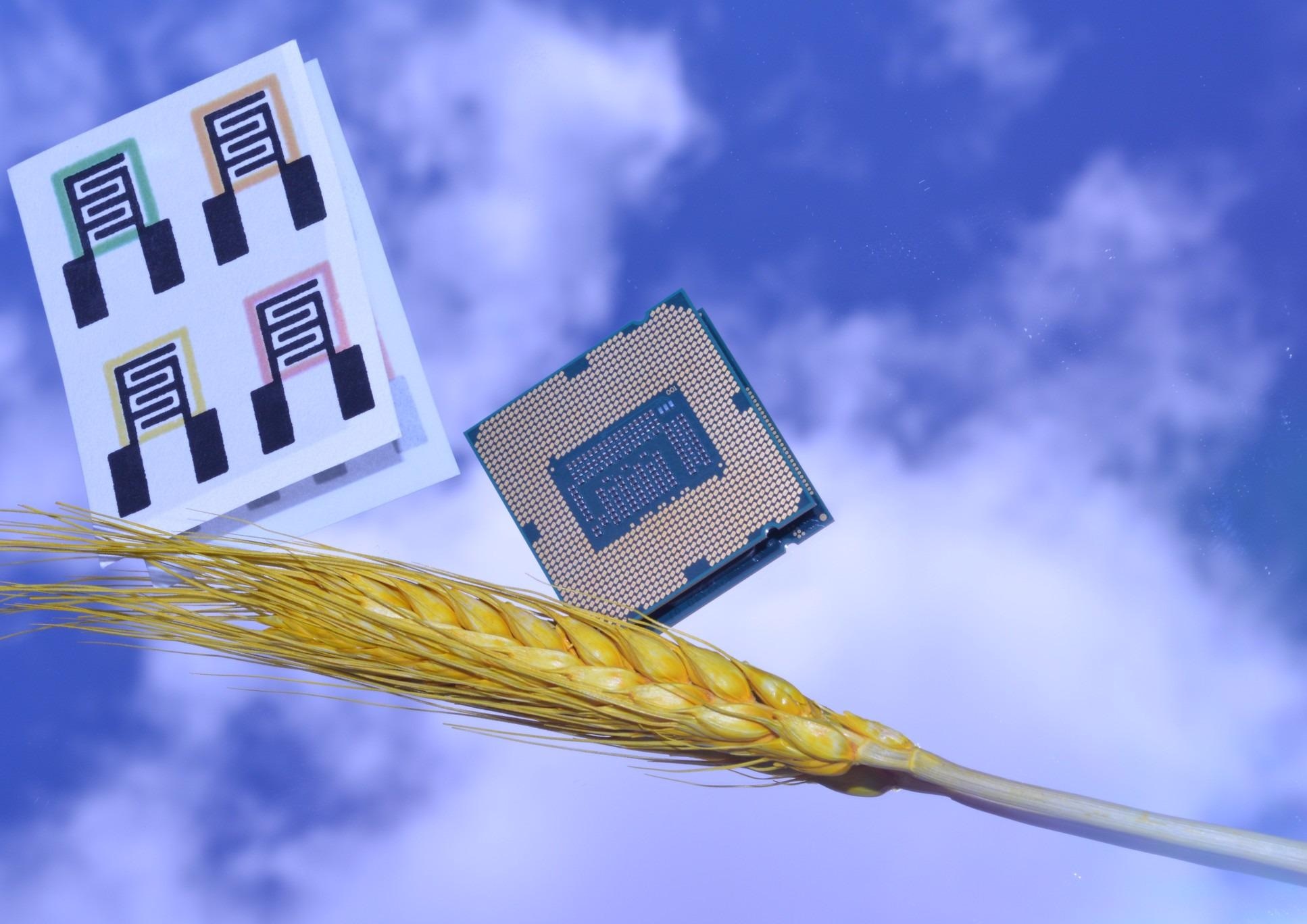
Image Credit: Tarek Asfour/Phil Coatsworth/Firat Guder © Imperial College London.
This would decrease the costly and environmentally destructive effects of overfertilizing soil, which emits the greenhouse gas nitrous oxide and can pollute waterways and soil.
Globally, overfertilization has so far rendered 12% of once-arable land inoperative and the use of nitrogen-based fertilizer has grown by 600% in the last five decades. However, it is hard for crop growers to customize their own fertilizer use: too much and the environment is jeopardized and money is wasted; too little and crop yields could be jeopardized.
The scientists who created this new sensing technology state that it could offer advantages for both the environment and farmers. The sensor, called chemically functionalized paper-based electrical gas sensor (chemPEGS), calculates ammonium levels in soil — the compound that is changed into nitrites and nitrates by soil bacteria.
Using a type of AI known as machine learning, it integrates this with weather data, pH, time since fertilization and soil conductivity measurements.
It employs this data to estimate how much total nitrogen the soil has and how much it will still contain up to 12 days in the future, to forecast the ideal time for fertilization.
The research identifies how this new cost-effective solution could help farmers produce maximum crops with minimal fertilization, mainly for fertilizer-thirsty crops such as wheat. The technology could instantaneously decrease farmers’ expenses and environmental damage from nitrogen-based fertilizers — the most extensively used fertilizer type.
It’s difficult to overstate the problem of overfertilisation both environmentally and economically. Yields and resulting income are down year by year, and growers don’t currently have the tools they need to combat this.
Dr. Max Grell, Study Lead and Co-Developer of chemPEGS, Department of Bioengineering, Imperial College London
“Our technology could help to tackle this problem by empowering growers to know how much ammonia and nitrate are currently in soil, and to predict how much there will be in the future based on weather conditions. This could let them fine-tune fertilisation to the specific needs of the soil and crops,” Dr. Max Grell added.
Nitrogen Pollution
Surplus nitrogen fertilizer emits nitrous oxide into the air, a greenhouse gas 300 times more powerful than carbon dioxide that contributes to climate change. Surplus fertilizer can also be carried away by rain into waterways where it depletes the oxygen needed for aquatic life, resulting in algal blooms and decreased biodiversity.
However, it is still hard to precisely customize levels of fertilization for soil and crop requirements. Testing is rare and existing ways to quantify soil nitrogen involve shipping soil samples to laboratories — a laborious and costly process whose results are of minimal use by the time they reach the farmer.
This new cost-effective method could accelerate the process of soil testing. While chemPEGS only quantifies ammonium, the machine learning component allows it to estimate existing levels of nitrate and future levels of ammonium and nitrate in the soil.
Much of our food comes from soil—a non-renewable resource which we’ll lose if we don’t look after it. This, combined with nitrogen pollution from agriculture, presents a conundrum for the planet—one that we hope to help tackle with precision agriculture.
Dr. Firat Guder, Senior Study Author and Principal Investigator, Department of Bioengineering, Imperial College London
“Our sensing technology can measure and predict soil nitrogen with enough accuracy to forecast the impact of weather on fertilisation planning, and tune timing for crop requirements, which we hope will help to reduce overfertilisation while improving crop yields and profits for growers," Dr. Firat Guder added.
The scientists anticipate chemPEGS and associated AI technology, which are, at present, in the prototype phase, will be available for commercialization in three to five years with more analysis and standardization of manufacturing processes.
This study was financially backed by Innovate UK, EPSRC, and Cytiva.
(English) Determining and Predicting Soil Nitrogen with Point-of-Use Sensors & Machine Learning
Video Credit: Tarek Asfour/Phil Coatsworth/Firat Guder © Imperial College London.
Journal Reference:
Grell, M., et al. (2021) Point-of-use sensors and machine learning enable low-cost determination of soil nitrogen. Nature Food. doi.org/10.1038/s43016-021-00416-4.